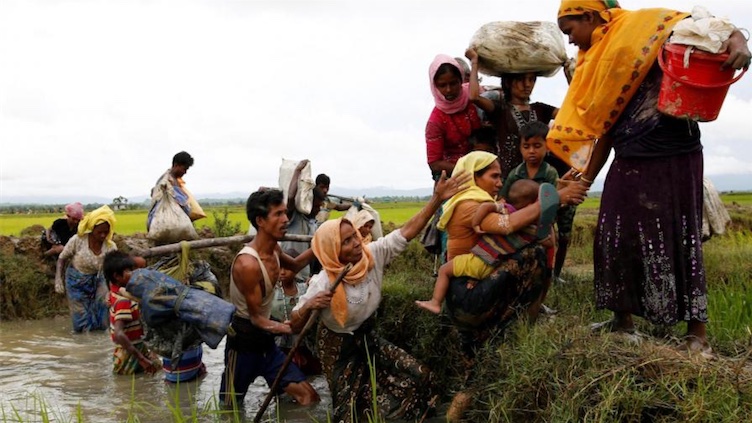The History of the Persecution of Myanmar’s Rohingya
By Engy Abdelkader | Sep 22, 2017

Some 420,000 Rohingya Muslims, a religious and ethnic minority community in Myanmar, have fled to neighboring Bangladesh since August this year.
The United Nations has called the Rohingya the world’s most persecuted minority group and described the atrocities by Myanmar’s authorities as “ethnic cleansing,” whereby one group removes another ethnic or religious community through violence.
But the persecution of the Rohingya is not new. My research on the Rohingya Muslim experience in Myanmar shows that this pattern of persecution goes back to 1948 – the year when the country achieved independence from their British colonizers.
Here is their brief history.
The legacy of colonialism
The British ruled Myanmar (then Burma) for over a century, beginning with a series of wars in 1824.
Colonial policies encouraged migrant labor in order to increase rice cultivation and profits. Many Rohingya entered Myanmar as part of these policies in the 17th century. According to census records, between 1871 to 1911, the Muslim population tripled.
The British also promised the Rohingya separate land – a “Muslim National Area” – in exchange for support. During the Second World War, for example, the Rohingya sided with the British while Myanmar’s nationalists supported the Japanese. Following the war, the British rewarded the Rohingya with prestigious government posts. However, they were not given an autonomous state.
In 1948, when Myanmar achieved independence from the British, violent conflicts broke out among various segments of its more than one hundred ethnic and racial groups.
Read more: http://religionnews.com/2017/09/21/the-history-of-the-persecution-of-myanmars-rohingya/















